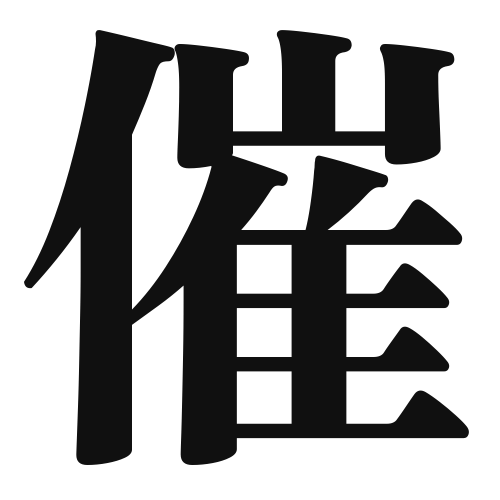1. Overview of Meaning
The kanji 催 (sai) means “to urge,” “to prompt,” or “to hold (an event).” It is often used in contexts where someone is encouraging or reminding others to take action or participate in something.
2. Formation and Radical
Formation of the Kanji: The kanji 催 is a phonetic-ideographic character (形声文字). It combines the radical for “to be” (催) with a phonetic component that suggests its pronunciation.
Radical: The radical for 催 is 走 (to run), which relates to the idea of moving or urging someone to act.
3. Examples of Usage
Common Words and Phrases: Some frequently used words that include 催 are:
- 催促 (saisoku) – to urge or prompt
- 催眠 (saimin) – hypnosis
- 催し (motooshi) – event or gathering
Example Sentences in Daily Conversation:
- 会議の時間を催促してもいいですか? (Can I urge you about the meeting time?)
- 彼はイベントを催す予定です。 (He plans to hold an event.)
4. Synonyms and Antonyms
Similar Kanji: A similar kanji is 促 (soku), which also means “to urge” but is more focused on the act of prompting someone to do something quickly.
Antonyms: An antonym for 催 could be 放置 (hōchi), which means “to leave alone” or “to neglect,” indicating a lack of urging or prompting.
5. Cultural and Historical Background
Relation to Japanese Culture: The concept of urging or prompting is significant in Japanese culture, where group harmony and participation in events are valued. The kanji 催 reflects this cultural aspect.
Proverbs and Idioms: One relevant idiom is 催促する (saisoku suru), which means “to urge someone to act,” often used in contexts where timely action is necessary.
